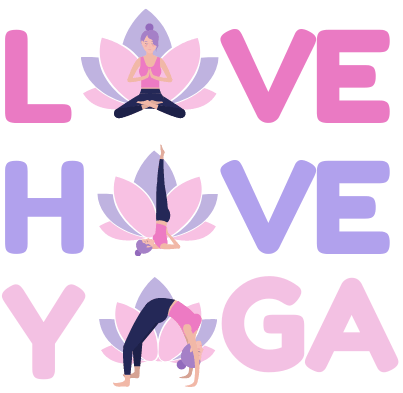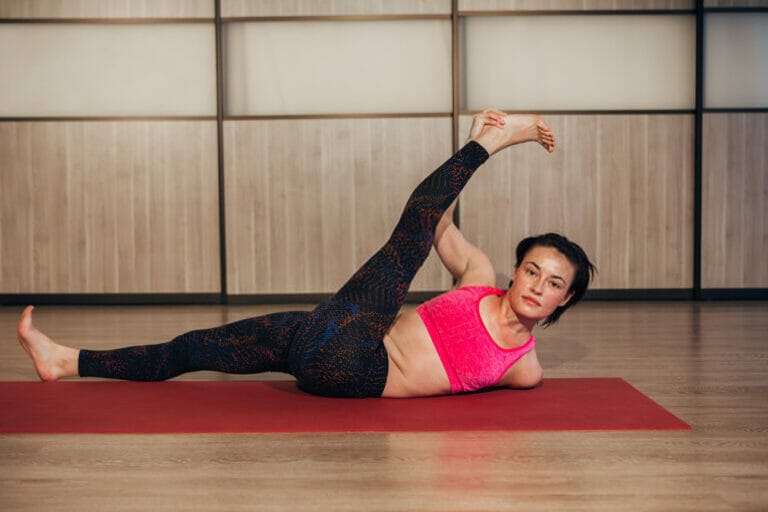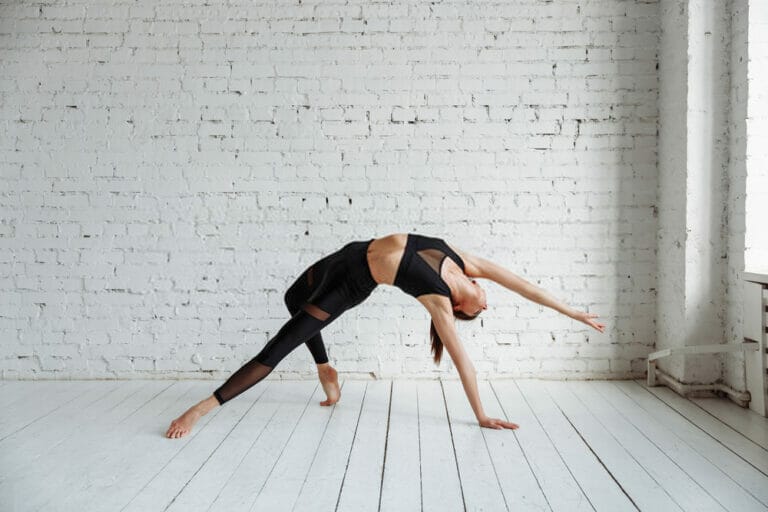Yin Yoga Sequence For Splits
Many of us would desire to attain the split posture but can’t imagine how it would ever be achievable! It is probably safe to say that you must be naturally flexible or begin at an early age to achieve this position.
On the other hand, Splits are more than feasible with practice, and Yin Yoga is a fantastic and highly effective approach for getting there. Yin Yoga is soft and passive, but it produces astonishing results in terms of flexibility.
Because of the passive nature of this type of Yoga, flexibility gains are gradual, but they are permanent as well.
So, in this article, I’ll outline the Yin Yoga sequence to push through the tightest of muscles and joints, force your sphincter apart, and plant the seed for splits. But, first, let’s learn a little about what yin yoga is.
What is yin yoga?
The theory of Yin and Yang, about Yoga, suggests that all good things take time. So if you are patient, your quest for flexibility will be patiently rewarded.
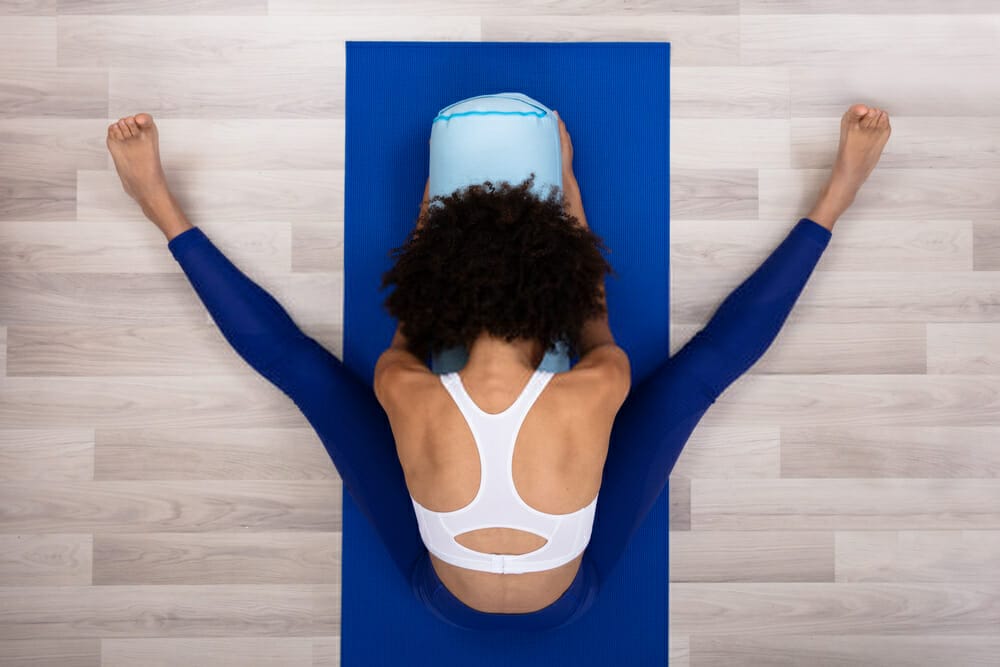
Yin Yoga is all about the controlled opening and closing of joints, or points along the muscle fibres, over long periods to develop flexibility through passive stretching rather than active strain. In Yin Yoga, we try to balance both sides by practising passive stretches and exercises to aid us in this journey.
If you have to strain or force yourself into your stretching position, you are doing it wrong. You need to let your body do the work for you by going into your pose and holding it passively.
If you try to get yourself there through strength, you may build muscle tension and not flexibility. Over time and with consistent practice, the connective tissue in your body will loosen and lengthen.
Yin Yoga positions must be held for at least 2 minutes to access connective tissues but are more commonly held for 3-5 minutes and up to 20 minutes for skilled practitioners.
Practising Yin Yoga requires two essential components:
- Maintain muscular relaxation.
- Maintain the posture for at least two minutes.
Yin Yoga Sequence for Splits
Be warned that this sequence is not for the faint-hearted. It goes against most conventional wisdom and will require you to endure what you might consider painful, but it works! So remember to breathe, relax, and enjoy the process.
The key to getting into splits is to open your hips, groin, and inner thighs.
Caterpillar Pose
Caterpillar position focuses on the hamstrings. Again, it’s a great warm-up stance for front splits since it extends both legs simultaneously.
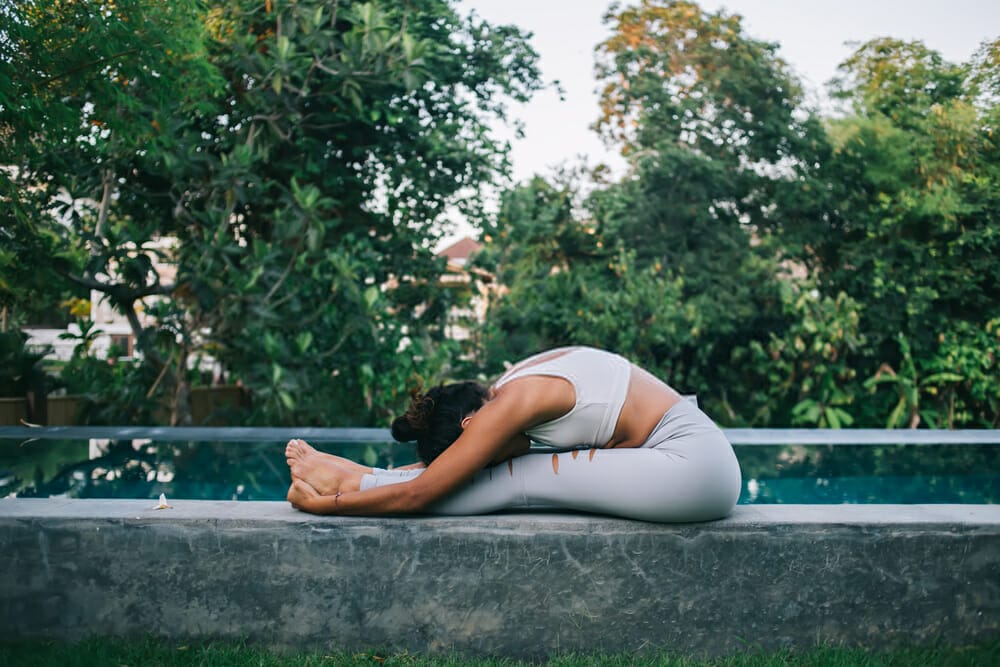
But, again, you’ll want to keep your toes pointed and push the hips toward the floor rather than letting them sink back.
To learn how to do the Caterpillar, click here.
Swan Pose
Swan pose, also known as pigeon pose, focuses on the hip flexors, which must also be open and flexible to perform front splits.
In this position, you are stretching the muscles at the back of your legs. You’ll also be working on posture, as a strong core is essential to getting into splits.
To learn how to do Swan Pose, click here.
Dragon Pose
The hip flexors are also worked on in the dragon position (lunge). It’s also a great warm-up stance for front splits. The big difference is that you are stretching both legs simultaneously.
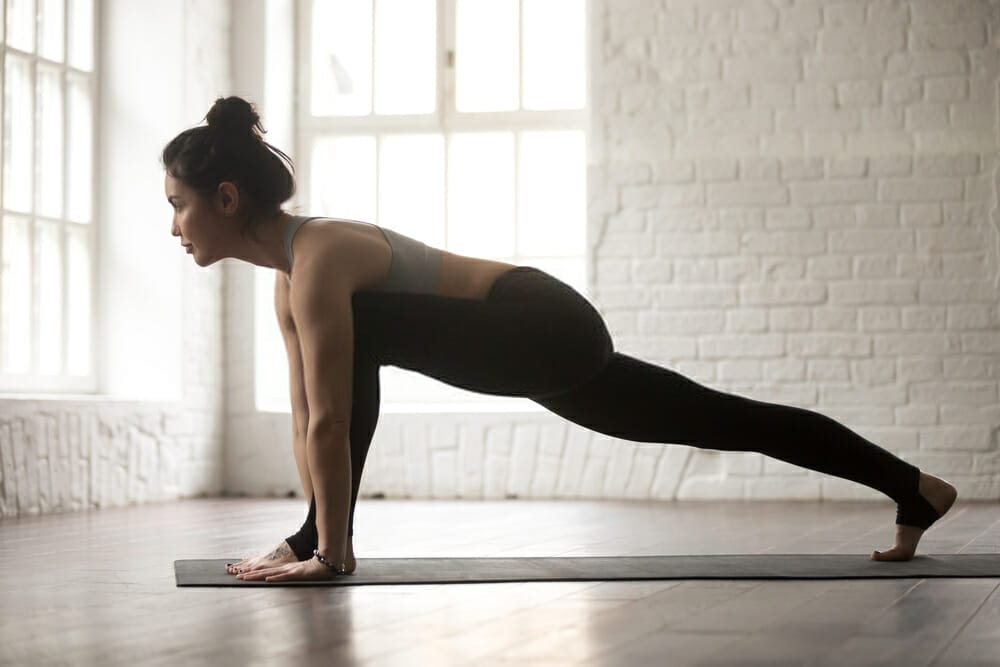
To learn how to do Dragon Pose, click here.
Runner’s Stretch
It is a warm-up for your hamstrings before moving into splits. Stand with your legs hip-width apart and lean forward, allowing your back leg to drop toward the floor. You can hold onto a wall for support if you need to.
To learn how to do the Runner’s stretch, click here.
Splits pose
When you’ve finished your preparation position, it’s time to go on to your splits! To learn how to do the Splits, click here.
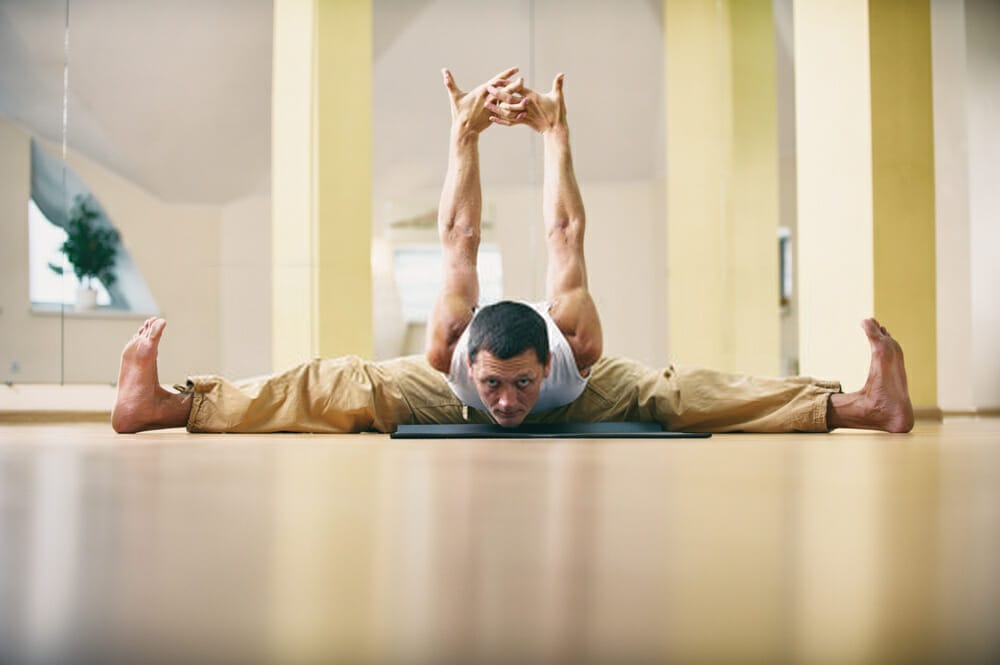
We work the hip flexors in this sequence by allowing your hips to drop and stretching those muscles.
You’ll need to ensure that your knees don’t go over your toes (the horse stance) or overextend in your splits. And, you need to ensure that you don’t hyperextend in front of your hip joints or injure yourself.
Butterfly
Butterfly focuses on the adductors, the muscles and tissues in the groin and inside of the leg that must be flexible to perform middle splits. To learn how to do butterfly, click here.
Half Butterfly
A half butterfly is an excellent warm-up for middle splits that also works the adductors. It is a more accessible position than the full butterfly. To learn how to do Half Butterfly, click here.

Dragonfly (Middle Splits)
It’s now time to spread your legs and open out into middle splits! The dragonfly series of poses will help you open up your groin for this purpose.
To learn how to do Dragonfly, click here.
In this sequence, we work our inner thighs and hamstrings to achieve the outer splits.
The muscles must remain relaxed while stretching for the stretches to be "yin." It is no longer a yin workout that targets connective tissue if you push, pull, or engage the muscles that are being stretched.
If you want a more difficult challenge, stay in the poses longer than the specified period (but no longer than 20 minutes). Similarly, if the indicated timeframes are too long, reduce the time spent in each pose to 2 minutes.
Conclusion:
Yin Yoga is all about opening up your body and making it more flexible and resilient. It takes time to get there, but the results are worth it! Follow the sequence above, and you’ll soon be on your way to splits!
Do you practice Yin Yoga? What benefits have you seen? Share your take on this yoga sequence in the comments section below.
